 |
||
|
||
| ||
It's no secret that many users buy CD-R discs being guided by just subjective preference or advice or opinion of familiars. In fact, the competition in this sector is determined by psychological pressing of promoted brands (in other words, by the sum of money invested), or by low prices on CD-R of noname manufacturers. All this hardly defines the real value of a disc and does not always meet the requirements of users for a qualitative product and objective information on a disc. All this means that the criteria of quality are blurry and are replaced by the criteria of fame and cheapness. The basic thing led to it is an absence of the available test equipment and full-value statistics. And there is nothing to wonder at: are you ready to buy a test station costing several thousands dollars to test a newly recorded disc with your favorite Red Hot Chili Peppers? No? That's why there is no other way except waiting when, each time you put inside a disc, there comes a question: "Is the disc still alive?" Undoubtedly, you may turn to different Internet resources in order to read the creators' opinions on different CD-Rs. But remember that test results differ much. You know that there are a lot of non-license discs which, even with the full accordance in design, enclosure etc., with the licensed ones would give out far worse results. Many think that a qualitative disc can be distinguished from a bad one by a cellophane package. To some degree it's true - look at the photos of the CD-R Hewlett Packard. 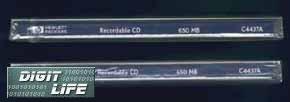 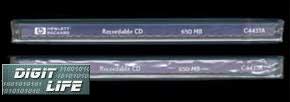 The upper pictures demonstrate a qualitative disc, on the lower - a non-licensed one. Bad stretch of the lower discs arrests the attention immediately, plus a "catch" for taking the enclosure off doesn't appear at once, i.e. you have to look carefully for it. I think you have guessed which would have better results. Unfortunately, the enclosure can not always tell the quality. Look at the CD-R discs shipping with a TDK 1024INT-A recorder. 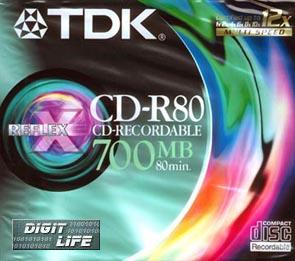 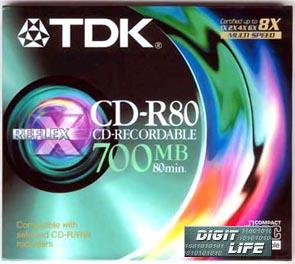 Such a 12X 700 MBytes disc is put inside the complete set at the work, and the 8X disc (the same capacity) is a fake. The difference in my opinion is quite noticeable. And if we can collect some statistics on old discs, new ones or "fresh" lots could be said something definite about only in some time. In many cases there is no time to wait a year or two, and as I have already said the full-value testing requires expensive equipment. Far not every company permits themselves the professional equipment for testing CD-Rs, so, what can we say then about usual users? We watched with interest an initiative of different users desiring to carry out an independent test. Undoubtedly, the rating we made on the base of different reviews has some positive sides, but in this case it's hard to avoid substitution of real facts by subjective preferences. Our test lab has been searching for a long time technical opportunities for independent objective investigation of the biggest range possible of CD-R discs available on the market. You might know that it's not only a user that wants such an investigation, but a lot of companies which purchase large lots of CD-R discs. This research was in fact initiated by one of such companies. This test is aimed not only at demonstration of the fact that Sony, say, makes only high-quality discs and different "noname" are good only as a plate for coffee cups. The result should be a strong guide both for companies selling optical storage devices and for users. And these results should be based on real facts and not on a principle "recorded/not recorded", "readable/unreadable". We managed to get the required equipment at one of few works that have everything necessary for tests - the CD CATS SA3 station (more detailed information can be found on the manufacturer's site). 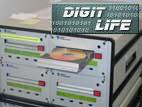 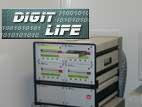 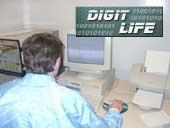 We will be glad also to be supported by other owners of test systems similar to the CD CATS. Such collaboration will supplement the CD-R testing with elements of analyses, since it will aid to compare results of two independent sources. One of the important parameters is simplicity and clarity of results. We will do our best in order you don't spend a lot of time to grasp the content or to look through a heap of graphs or download thousands megabytes via a modem. Besides, we will not forget the experts who need more than just diagrams. Note that we do not except possible imperfections in testing techniques or calculation algorithms. That's why you are welcome for discussions and we will accept every piece of advice that'd improve our investigations. Beside the graphs the station gives out results in digital form. 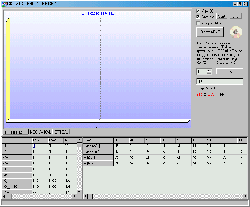 Considering complexity of summarizing the obtained results and a huge volume (i.e. the size, in MBytes) of the material we marked out three main categories: physical characteristics of a disc (deformation, disc's geometry etc.), optical (e.g. reflection) and reliability of storing information on the investigated disc (the same BLER). The graphs are calculated with the special software, since it's impossible to process such impressive material manually. But first we should start with the CD-Rs under consideration. With the Plextor PX-W124TSi CD-RW drive we wrote three discs from each company at 2X, 4X and 8X. When purchasing we took just the most popular discs. Hewlett Packard CD-R C4437A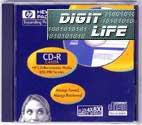   ATIP: 97m 24s 01f
As to HP, today we offer two of the CD-R discs: from Mitsui and from Taiyo Yuden. You can easily distinguish one from the other: in most cases an internal rim of the Taiyo Yuden disc has a lusterless surface, the serial number is positioned horizontally and seems to be extruded on this surface. The Mitsui discs have a usual transparent rim and the serial number is printed around the disc. Mitsui 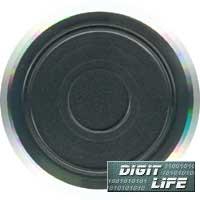 Taiyo Yuden 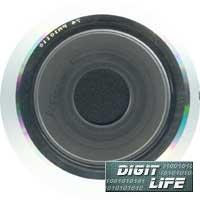 The color of the working layer differs as well; the Taiyo Yuden is greenish blue, the Mitsui is greenish yellow (some call these discs "golden", by mistake). SKC CD-R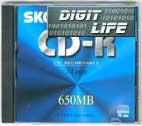 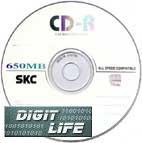 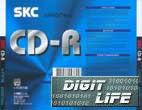 ATIP: 97m 26s 24f
Mirex Gold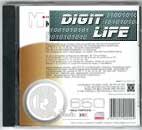 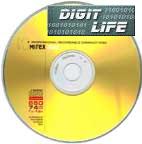 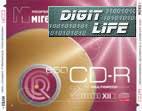 ATIP: 97m 28s 26f
The CD-Recordable corresponds to the standard of the Orange Book. Compatible with all widespread professional CD-ROM and CD-R writers for CD-R record at 1x, 2x, 4x, 6x, 8x, 12x speeds. Provides a space for user's marking. Unlimited storage period when operating rules are followed. Philips Silver Premium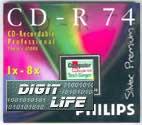  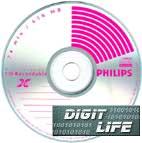 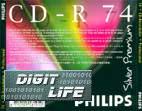 ATIP: 97m 24s 01f
The Philips CD-R discs for any speed correspond to the standard of the Orange Book and are compatible with prevalent CD writers of 1x, 2x, 4x, 6x and 8x speeds. In fact, the disc is intended also for 12X record - the disc contains a sticker on compatibility. But still, we will be guided by the specified speeds, especially considering that in this test the presence of 12X record support doesn't matter. The disc is covered with a color polyethlene film. The stretch is very even without waves. Sony CDQ-74CN 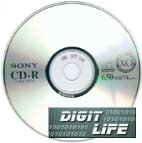 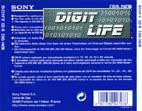 ATIP: 97m 27s 55f
 When buying a Sony disc in the box you can find Mitsui, Taiyo Yuden, Ricoh or Sony. In most cases the discs, except TY, are put in the box of dark brown or black color. The box of the CD-R Sony from Taiyo Yuden is usually white. These discs can be distinguished with the same lusterless internal rim. TDK CD-R74 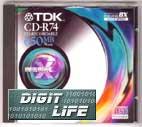 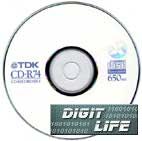 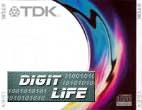 ATIP: 97m 24s 01f
The TDK CD-R, as well as Philips, is covered with a color polyethlene film. The stretch is rather even and without waves. Test resultsThe less value corresponds to a higher quality index of a CD-R disc. The diagrams for the CD-Rs recorded at 2X 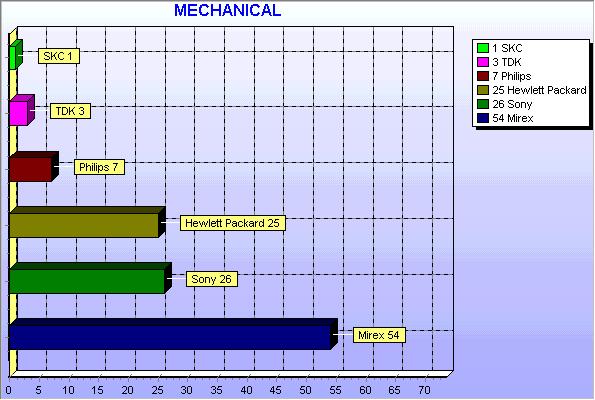 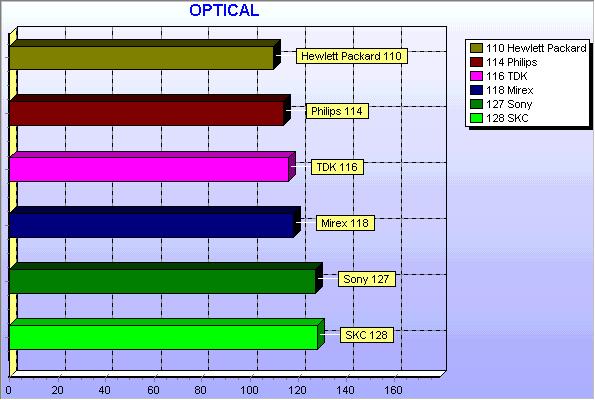 The diagrams for the CD-Rs recorded at 4X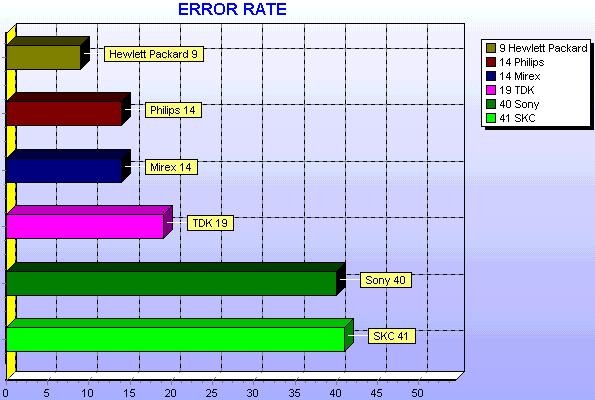   The diagrams for the CD-Rs recorded at 8X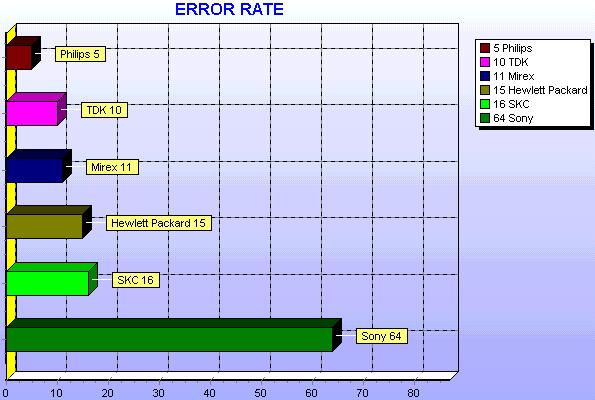 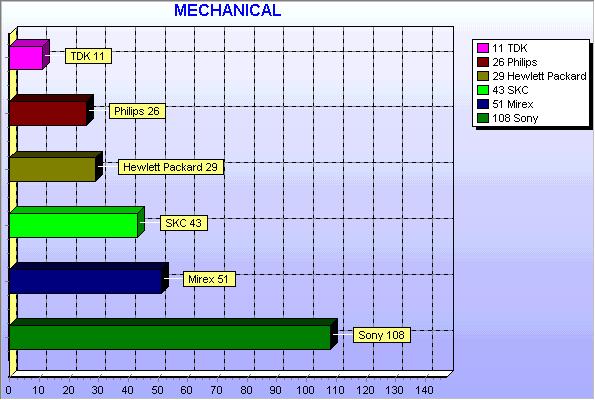 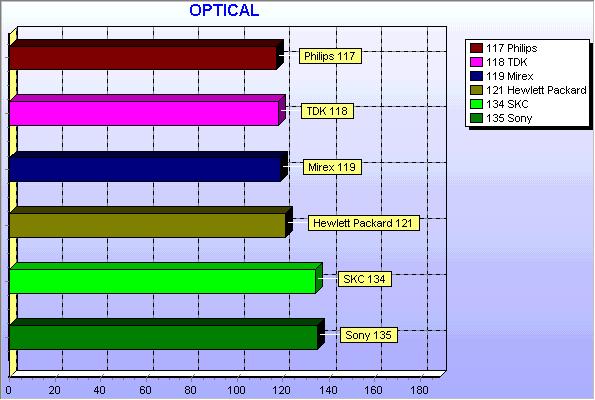 We meaningly do not summarize. We hope that with the graphs provided each of you can draw your own conclusions. In the second part of our review on CD-R discs you can find the following:
Write a comment below. No registration needed!
|
Platform · Video · Multimedia · Mobile · Other || About us & Privacy policy · Twitter · Facebook Copyright © Byrds Research & Publishing, Ltd., 1997–2011. All rights reserved. |